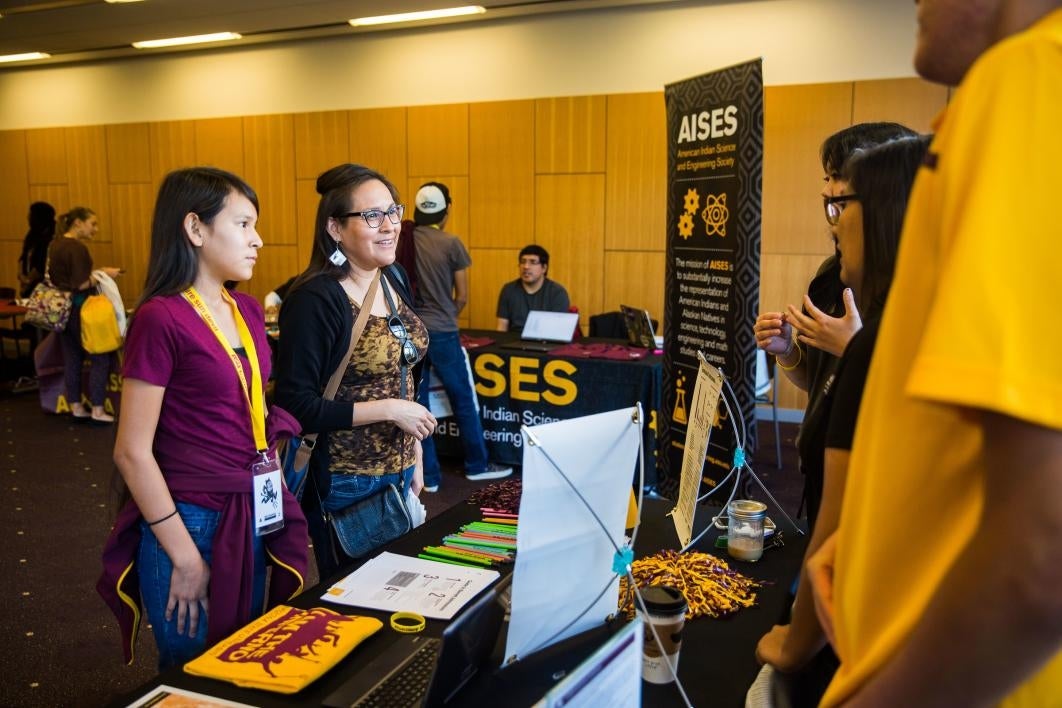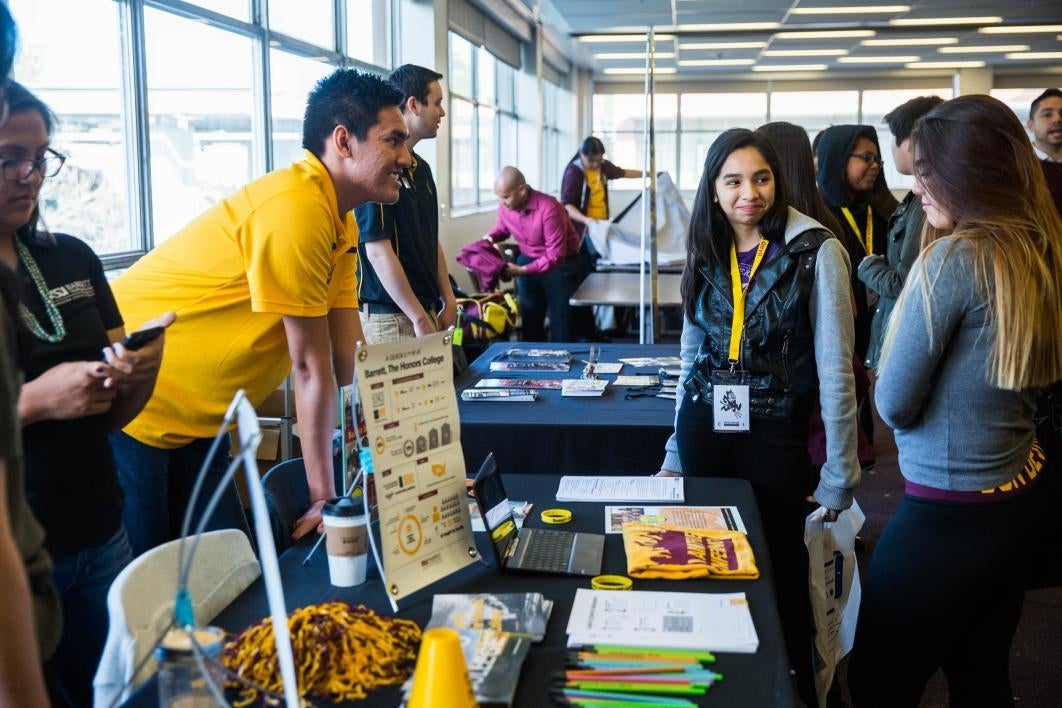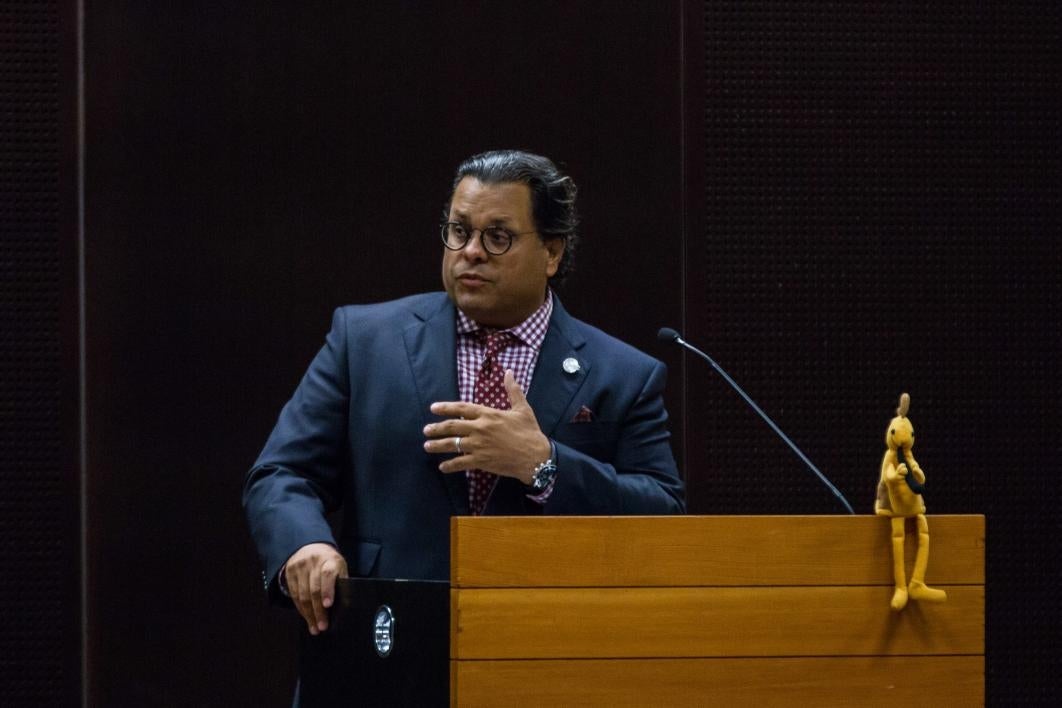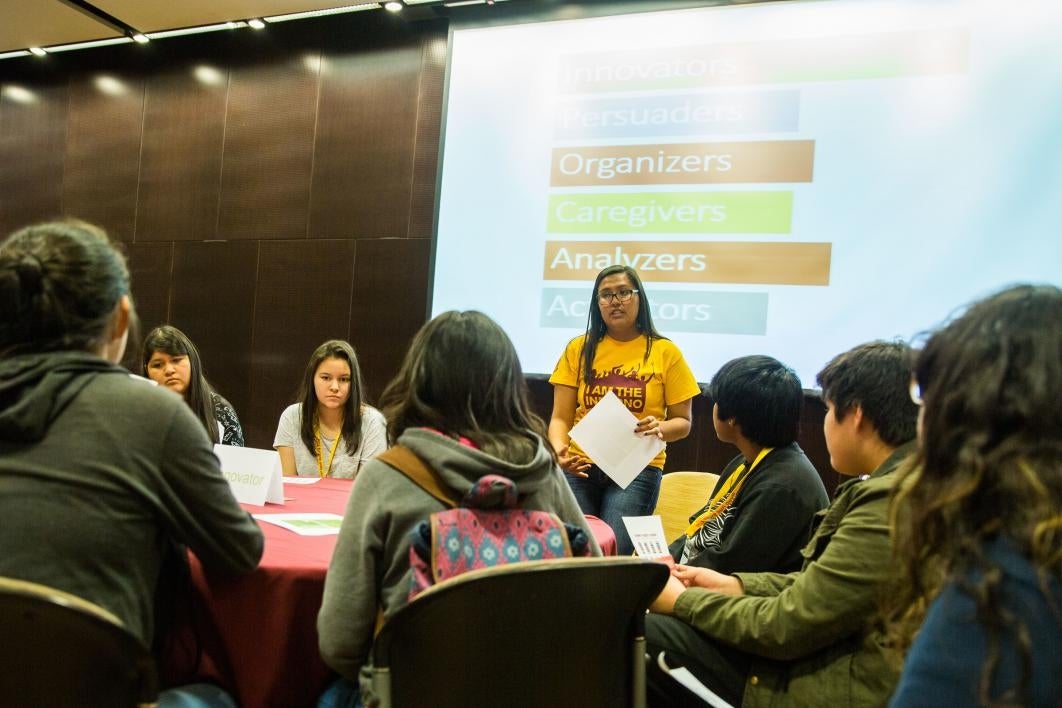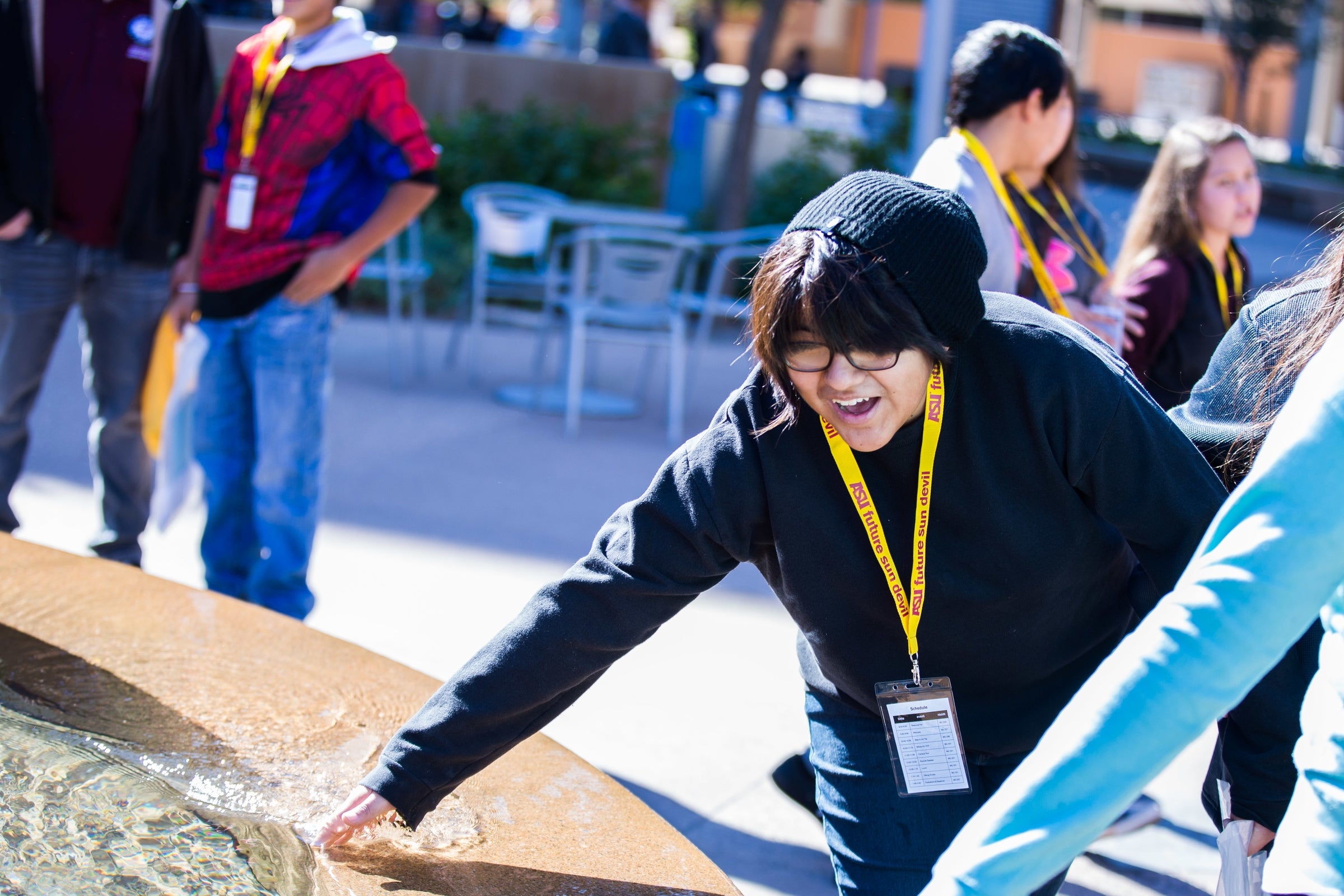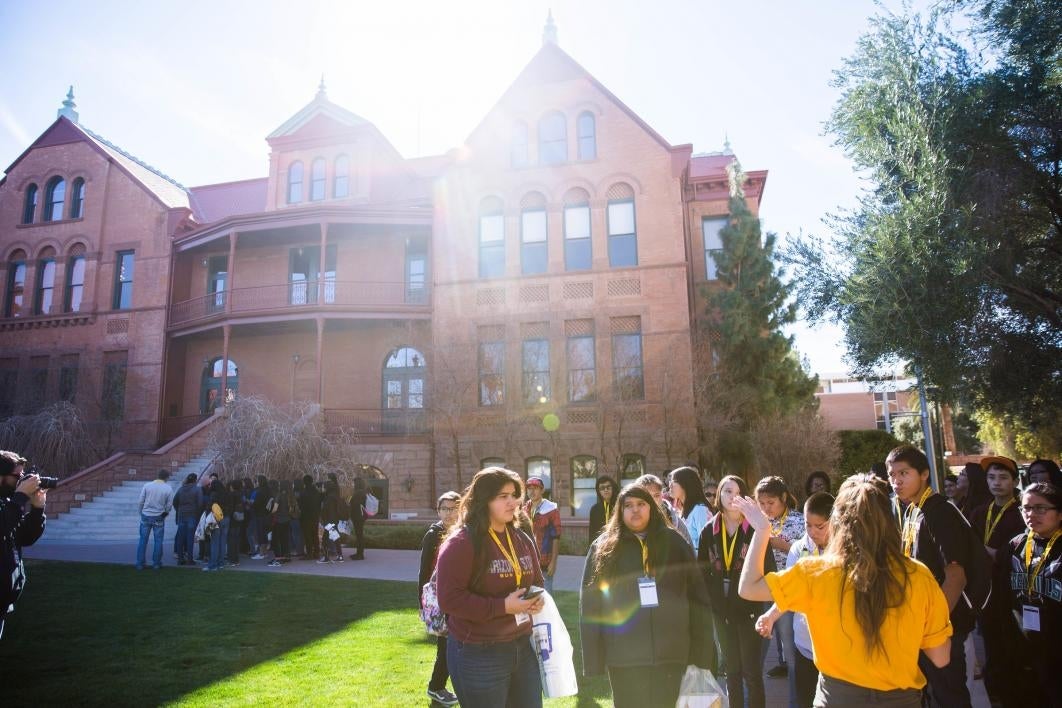Eight students in grades 7-12 sat in a circle, discussing how to prepare for college. While discussing what excited each student most about college, Kiana Montero, an 11th-grader in the White Mountain Apache Tribe, spoke up.
“The new people and opportunities,” Montero said confidently.
Montero is one of 300 American Indian students from across Arizona who participated in the RECHARGE conference Monday on Arizona State University’s Tempe campus. The daylong conference engaged students in a conversation about college readiness with topics ranging from financial aid to academic preparedness.
For Montero, the conference provided her with an opportunity to learn about the college process.
“My parents didn’t go to college, and I want to be the first in my family to graduate from college,” said Montero.
Programs such as the RECHARGE conference serve an important role empowering American Indian students to attend college. The conference provides resources about higher education to students who might not otherwise receive this information.
“Many of the students here would be first-generation college students,” said Michael Begaye, director of the American Indian Student Support Services at ASU. “They often need guidance to navigate the complicated maze of forms and applications for college, financial aid, scholarships, etc.”
Today, fewer than 1 percent of all college students in the United States are of American Indian descent; fewer than 13 percent of all American Indians earn a college degree.
Efforts to raise college enrollment among disadvantaged groups are central to ASU President Michael Crow’s goal of increasing the number of college graduates in Arizona. Increasing the number of college graduates also has significant economic benefits, yielding an additional $660,000 for the state economy per graduate.
Already, ASU is taking strides to increase American Indian enrollment with efforts geared toward helping students succeed in college. Through specialized programs — such as the SPIRIT orientation program, which helps American Indian students adjust to life in college — and unique peer mentoring opportunities, ASU strives to ensure that its American Indian students have access to resources that promote their academic and emotional well-being.
Through these efforts, ASU has an American Indian enrollment rate of 1.6 percent, a rate that is 70 percent higher than the national average.
For Begaye, he is excited that he can help educate a new generation of American Indian students like Montero, who wants to use her education to help her community in a health-care capacity.
“I strive for better things,” said Montero. “I want to do even more, and that’s why I want to be a pediatrician.”
More Sun Devil community
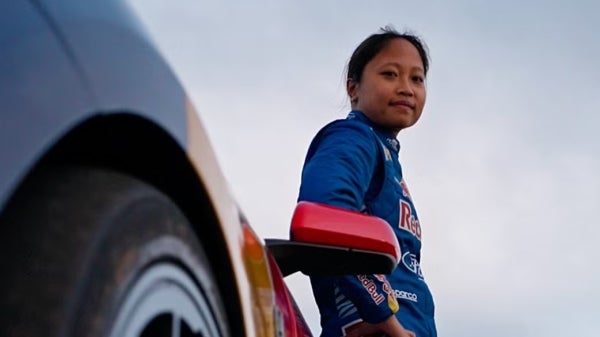
These Sun Devils are inspiring the next generation of female athletes
This year, Women's History Month is celebrating the theme “Moving Forward Together! Women Educating and Inspiring Generations.”Women in sports inspire fans of all ages through their accomplishments…
Founders’ Day 2025 celebrates legacy and innovation at ASU
"Honor the past, celebrate the present and invent the future." This motto encapsulates the spirit of Founders' Day, a signature event hosted by the Arizona State University Alumni Association to…

ASU preps America's veterans for what's next
Every year, over 200,000 active-duty military members trade their uniforms for civilian attire as they embark on the next chapter of their lives filled with both promise and uncertainty.The shift…

